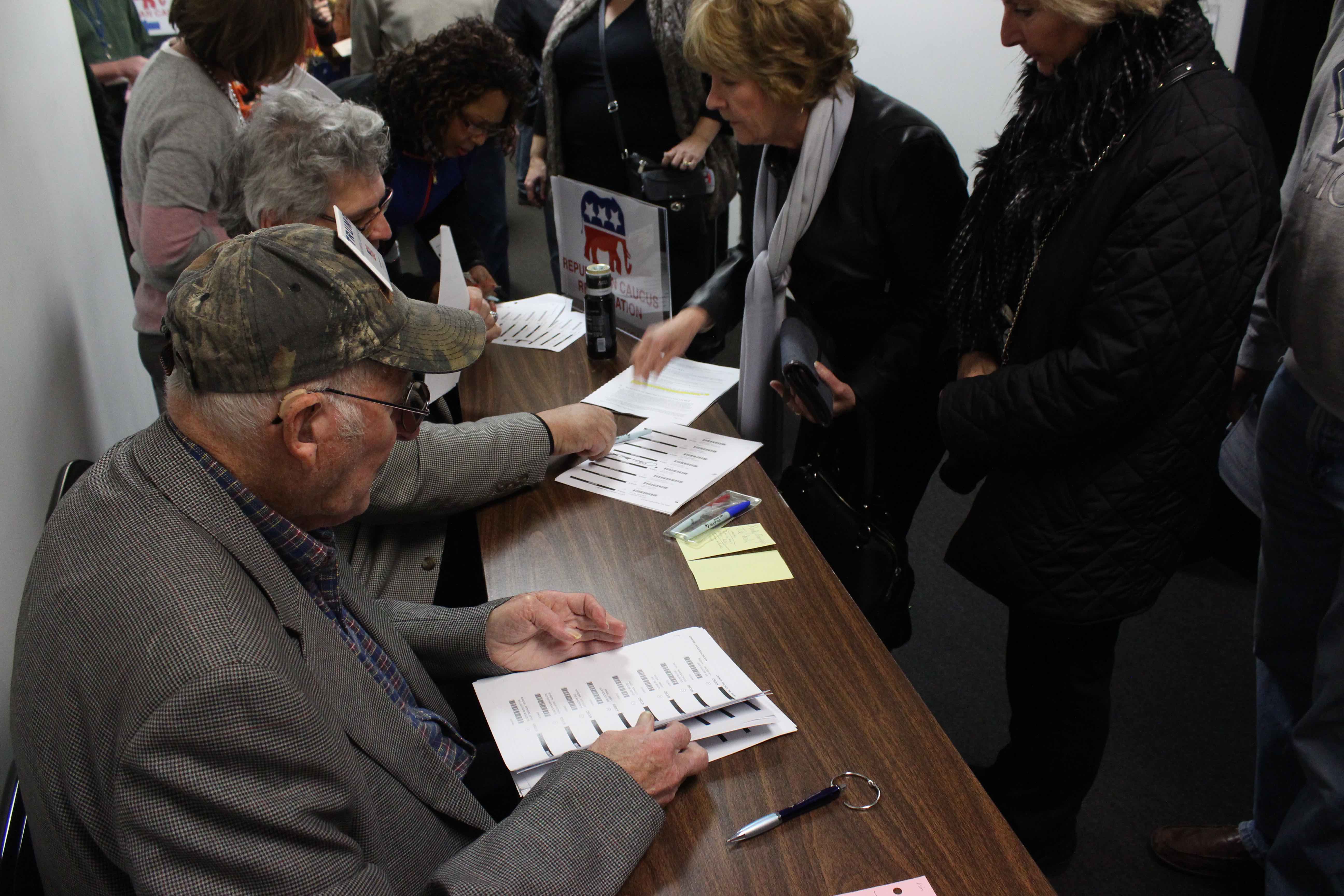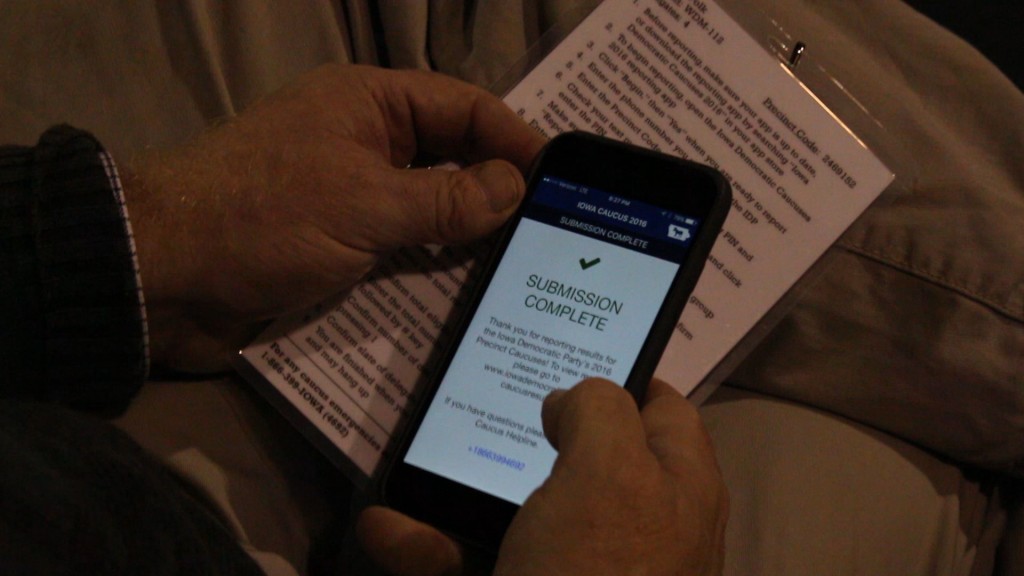
The Iowa caucus process tends to be a bit of a mystery to outsiders and can seem daunting for many Iowa voters. While the process for Democratic caucuses is very deliberative and involves voters physically — and therefore publicly — moving to different areas to record their voting preferences, the Republican caucus is a more private affair.
Cindy Golding, Linn County Republican Party chair, organized a rally for Donald Trump in Cedar Rapids, Iowa, on the day of the caucuses. She says it’s important to realize the caucuses are held by and for the parties.
“This is a party event,” Golding says. “This is not a taxpayer-funded operation. People from primary states don’t understand the difference … a caucus is an intentional party-building activity.”
The Republican Process
Iowa is a closed caucus, meaning a voter must be a registered member of a party to participate, but Iowa voters were able to fill out a voter registration form when they arrive at the caucus, Golding says.
The Republican process is based on secret ballot, with an informal straw poll — this year called a presidential preference poll — taken before the official vote is tallied and reported. The only public votes are when the precinct representatives are being elected. These volunteers will represent their precinct at the county convention March 12.
Golding says the guidelines state you must vote at the end of the caucus, but there is no specific mandate on how the proceedings should be conducted before the final vote, only suggestions.
“You can tell your neighbor who you’re voting for, but you don’t have to,” she says.
Technological Changes
Golding says the Iowa Code lists the rules for how the caucuses are to be run, which require both parties to hold their caucuses at a certain time, so the parties work together to decide on the date and locations.
“The county parties can run the caucus how they choose, within the guidelines of the state rules,” Golding says. “So all of the 99 counties will be caucusing [Feb.1] at 7 [p.m.].”
While the basic rules of the Republican caucus remain unchanged, at least in Linn County, Golding says this is the first year the results are being reported from both the Democratic and Republican caucuses via a smartphone app designed by Microsoft. She says there is a designated reporter for each precinct, who is identified and trained beforehand, who has access to the app, which is linked to their phone and a special code known only to them.

During past years, the reporters would report the results via a phone call, which Golding says is the backup plan if anything goes wrong with the new technology.
“We have used electronic media in the past, but this is the first time the parties are using the same database,” Golding says. “[The Republicans and Democrats] have different apps, but it’s all the same base … we’re doing all the caucusing the same way we’ve always done, except for technology.”
Although there were a few reports on Twitter that the Republican caucuses results site was overloaded a few times on caucus night, USA Today reports that Microsoft said in an emailed statement that their reporting system worked without issue. Before the caucus, however, some on the Democratic side were suspicious about Microsoft’s motives in providing the free app.
The Sanders campaign in particular noted that Microsoft employees have donated substantial amounts to Hillary Clinton, questioning the app’s partiality. As it turned out, more than half of the 1,681 Democratic caucuses ended up using the app to report their results, while the rest used the traditional phone-in method.
The next caucus, Nevada, will be held on different days for Democrats and Republicans, on Feb. 20 and Feb. 23 respectively. How exactly the results will be reported has not yet been publicized.
